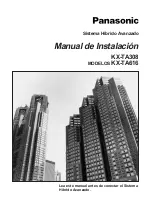
18
MEASUREMENTS
m
ounting
tHe
sensors
Due to the small size of the microsensor tip and the steepness
of H
2
S gradients in many environments, even a few microns’
displacement of the sensor tip may change its immediate H
2
S
environment . The sensor tip is quite flexible and can bend around
physical obstacles . But coarse lateral movements of the sensor
when its tip is in contact with a solid substrate may easily cause
the tip to break .
Therefore measurements should be performed only in a stabilized
set-up, fixed on a sturdy table free of moving or vibrating devices .
We recommend our lab stand (LS) and the micromanipulator
(MM33 or MM33-2) for this purpose .
e
lectrical
noise
The signal of the microsensor is very small (10
-10
to 10
-13
ampere) .
Although all our amplifiers and the H
2
S microsensors are very
resistant to electrical noise from the environment, electrical fields
may interfere with the sensor signal . Therefore we recommend
that unnecessary electrical/mechanical equipment is switched
off and that the sensor or wires are not touched during
measurements and signal recording .
On suspicion of sensor damage, repeat calibration and consult the
Troubleshooting section .
p
H
influence
As mentioned above, the H
2
S concentration is a function of pH . If
measurements of H
2
S are performed in points along a pH gradient,
pH should be measured in the same points with a pH microsensor
(e .g . pH-10, pH-25, or pH-100) to allow the determination of the
total sulfide concentration . Use the equations in the calibration
section in order to calculate [S
-2
tot] .
WARNING
Measurements in
a light gradient
should be avoided,
and interpretation
of measurements
in a light gradient
should be made
with the light
interference in
mind.
WARNING
Always introduce
and retract the
microsensor
axially using a
micromanipulator
and a stable stand
when measuring in
solid or semisolid
substrate like
sediment, tissue,
biofilms, microbial
mats etc.







































